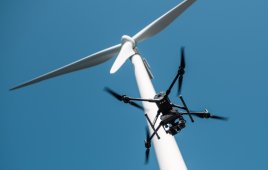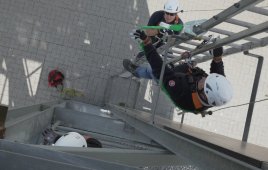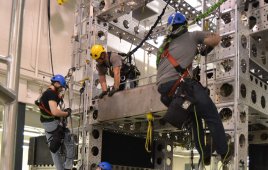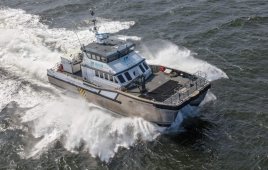The trends in fall protection revolve around new equipment such, as harnesses and lanyards, and updated standards.
Harnesses, lanyards, and lifelines
The trends in equipment point to modern materials, more options, and new designs, all of which are growing in number. For instance, in days past, a technician might select a harness by size alone. Now items to consider include padding, quick-connect buckles, harness weight, webbing, and built in features. Here’s a brief expansion of these items.
Padding makes the harness more comfortable to wear, removing some of the discomfort caused by web straps. Quick-connect buckles do just that and improve over older pass-through buckles. The weight of a harness is more important the longer a tech must wear. Lightweight fabrics, such as Kevlar, allow taking out weight without sacrificing strength, and aluminum hardware can replace some steel parts. Recent harnesses comes with liquid resistant webbing, and thanks to some coatings, they can repel paint as well. Stretchable webbing, encountered less frequently, allows moving more easily.
The last of these items, built-in features, number in the dozens. Spring-loaded dorsal D-rings, for one, are widely used because they are easier to reach than other designs. Suspension-relief straps are another popular option. And inflatable life vests shows the specialization available.
With regard to lanyards, trends are toward lighter, stronger, and more durable designs than previous versions, and toward modularity. One such recent lanyard is said to be the industry’s first modular version with components that can be individually replaced when worn or damaged, rather than having to purchase an entire new unit. This design also features an energy-management material for a small package providing light yet strong hooks. Designs include durable webbing with rugged and durable soft covers to protect labels.
A one handed, quick-connect design offers good versatility, letting users change tools on the spot to accommodate job requirements, such as leg length, hook type and size, and single or twin leg configuration.
A recent self-retracting lifeline (connects a harness to an anchor) is said to be the first-of-its-kind to provide a safe and reliable fall-protection connection for those in utilities and electric markets.
Wider choice, another trend, is a watchword in new equipment. For example, 16 standard lifeline configurations meet most arc flash or hot-work needs. One lifeline lists an electric arc performance of 40 cal/cm2 and meets the ASTM F887-11 arc-flash standard. Configurations are available for bucket truck and aerial-lift applications.
Material trends continue as well. Modern fibers make the lanyard resistant to abrasion, moisture, chemicals, and cuts, and it uses less than half the material content than competing products. And the lifeline mentioned is made entirely of Kevlar for spark and fire resistance, while a coating provides abrasion resistance and a “self-cleaning” effect. At only 1.9 lb, it is thought to be the smallest and most compact lifeline on the market, yet can support workers weighing up to 420 lb.
Standards
With regard to standards, those who work at height should be aware of relevant ANSI, OSHA, and the less familiar Canadian Standards Assn. As you expect, this latter organization serves business, industry, government, and consumers in Canada. A recent update from the Association that should be of interest to wind workers – CSA Z259.12-11 Connecting Components for Personal Fall Arrest Systems – deals with connecting components manufactured after December 1, 2012. These must meet the 3,600 lb (16 kN) gate-face and side-load testing requirements along with the CSA Z259.12 and have a CSA logo marked on it. Web and soft loops are now identified as Class I connectors and have more stringent abrasion testing and labeling requirements. Snap hooks are no longer an acceptable connection point into a web or soft loop. However, compatible connections do include choke-off loops, D-rings, O-ring extensions, and carabiners that meet the 3,600-lb requirement. The standard went into effect December 1, 2012. CSA Z259.12-11 Canadian Fall Protection Code is part of a series of CSA standards on fall protection products that provides performance requirements, test methods, and marking requirements for individual components used as part of a personal fall arrest system. WPE
Filed Under: Featured, Safety




